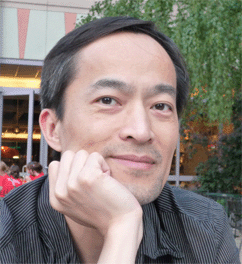Hong Pan, Ph.D., serves as the Associate Director and as Image Analysis Scientist at the Functional Neuroimaging Laboratory (FNL), Brigham and Women’s Hospital, Harvard Medical School.
Hong obtained his B.S. and M.S. degrees in Engineering from Shanghai Jiao Tong University in Shanghai, China, and was majored in Biomedical Engineering, including one and a half year curriculum of biology and medicine at then Shanghai Medical University and its affiliated hospitals. His electrical and biomedical engineering research work involved topics ranging from digital instrumentation of microcomputer-controlled I.C.U. monitoring system to nonparametric spectral analysis methods with applications in digital signal detection, de-noising, and EEG signal analysis.
Hong then devoted the next five years to computational neuroscience research at Institute of Biophysics, Chinese Academy of Sciences in Beijing, China, and conducted theoretical studies on nonlinear neurodynamics of central pattern generator in Tritonia escape swimming and network self-organization mechanism of neural development in mammalian visual system.
Hong entered his Ph.D. program at the School of Electrical and Computer Engineering, Purdue University, West Lafayette, Indiana, in 1993. While continuing his work on neural computation, he ventured into the field of mathematical statistics and machine learning, and studied the design and analysis of modern regression methods, and spent his time of preparing his dissertation on hierarchical Bayesian approach to nonparametric regression models such as neural networks, at the Department of Electrical Engineering, UCLA.
Upon obtaining his Ph.D. degree in 1999, Hong joined the FNL, co-directed by Drs. Silbersweig and Stern, at Cornell University Medical College, and was responsible for developing, designing, implementing, testing, and maintaining new biomedical image processing and statistical analysis methods, algorithms and software packages for multi-modal imaging data acquisition, processing, analysis, and visualization. Particularly, he has introduced and implemented a whole set of advanced univariate and multivariate statistical methods, including multi-level mixed-effects models and multi-way hierarchical clustering methods, to the field of functional neuroimaging research, with HPC implementation in interactive parallel/distributed computing environments.
Hong’s research interests include mathematical statistics, biomedical image processing and analysis, and neural computation and machine learning.

